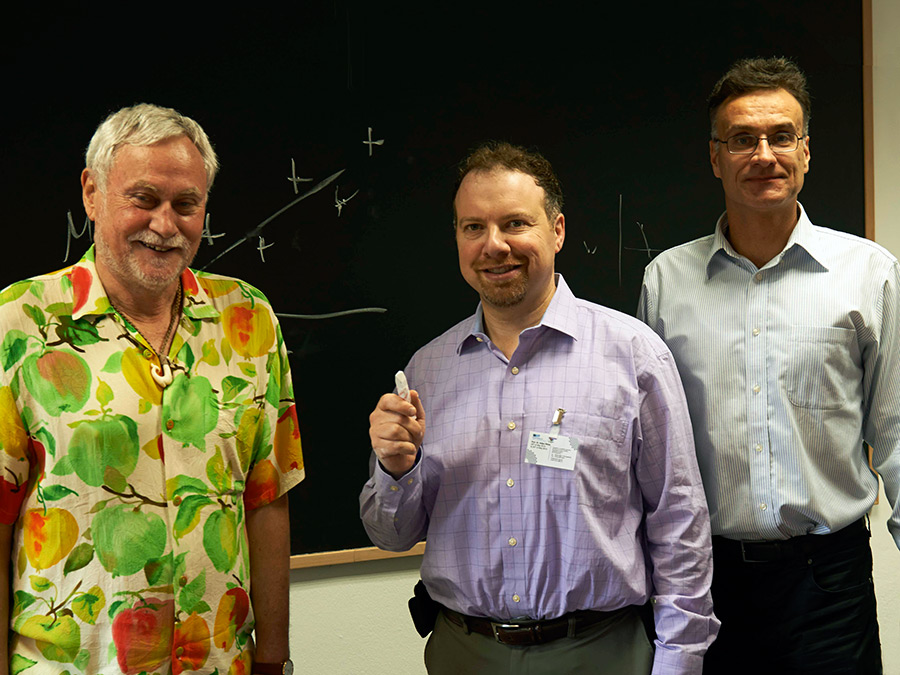Visiting Research Center “Munich Institute for Astro and Particle Physics” opens
Focal point for international cutting-edge research

The Munich Institute for Astro and Particle Physics (MIAPP) organizes four-week research meetings on current topics in nuclear and particle physics, astrophysics and cosmology. In the context of these “programs”, as the meetings are called, up to 60 scientists will be invited to work at the visiting research center to exchange ideas, develop creative concepts and projects and enter into new collaborations.
Well-known scientists from around the world will meet researchers from the physics departments of both Munich universities, Technische Universität München and Ludwig-Maximilians Universitüt München, the Max Planck Institutes of Physics, Astrophysics, Extraterrestrial Physics and Plasma Physics, the Leibnitz Computing Center (LRZ) and the European Southern Observatory (ESO). The MIAPP is located on the Research Campus Garching near Munich.
The first invitation of the MIAPP has been accepted by 53 international top researchers, including the 2011 Nobel laureates for Physics, Professor Adam G. Riess and Professor Brian P. Schmidt.
In the “Extragalactic distance scale” program they hope to develop a strategy for reducing the inaccuracy of the Hubble constant from ten to one percent within the next decade. The Hubble constant is a measure for the age and expansion speed of the universe. Physicists are keen on getting an accurate value for the constant because this will open the door to new insight on dark energy – the source of the accelerated expansion of the universe.
Three further four-week programs on topics of modern basic research in the fields of nuclear and particle physics, astrophysics and cosmology will follow later this year. So far some 250 scientists have registered for the programs. Just under half of all registrants are university professors or renowned researchers at research institutes. Registration is already underway for six programs slated for 2015.
“The feedback from the scientists manifests that the MIAPP idea of providing freedom for research and creative ideas is being welcomed with open arms,” says MIAPP Director Professor Martin Beneke (TUM). Co-Director Professor Rolf-Peter Kudritzki (LMU/University of Hawaii) adds, “We hope the MIAPP will bring forth new initiatives that will allow the mysteries of modern particle physics and astronomy to be solved in a relaxed and open atmosphere.”
MIAPP Programs 2014:
The Extragalactic Distance Scale (Mai 26 to June 20)
Neutrinos in Astro- and Particle Physics (June 30 to July 25)
Challenges, Innovations and Developments in Precision Calculations for the Large Hadron Collider (July 28 to August 22)
Cosmology after Planck (August 25 to September 19)
Contact:
Prof. Dr. Martin Beneke
Technische Universität München
James-Franck-Str. 1, 85748 Garching, Germany
Tel.: +49 89 289 12371 – E-Mail – Internet